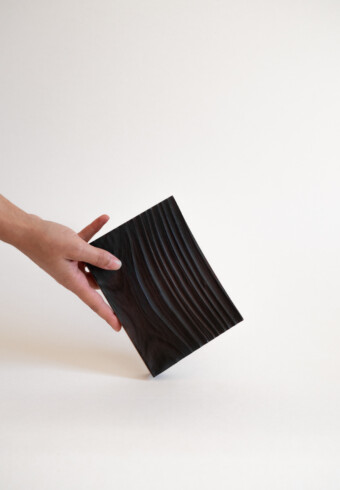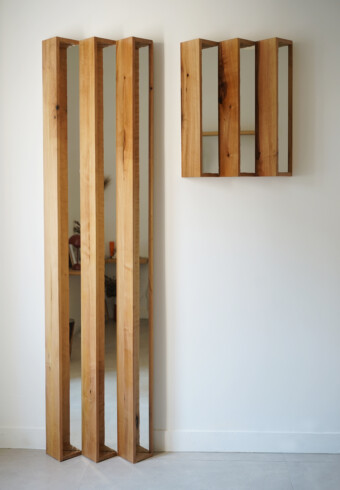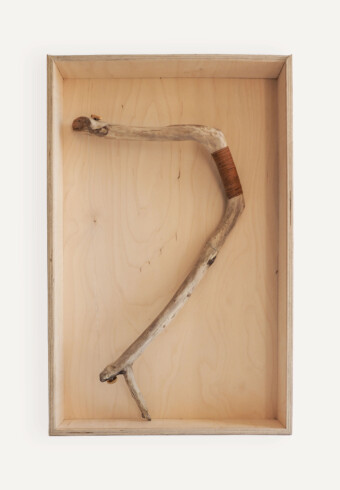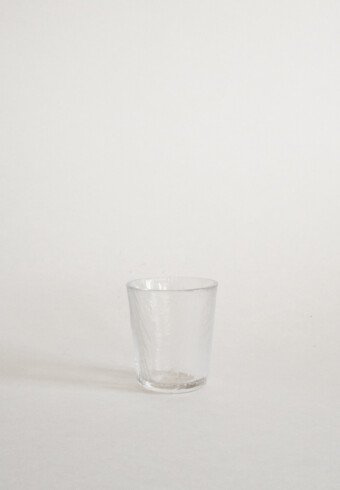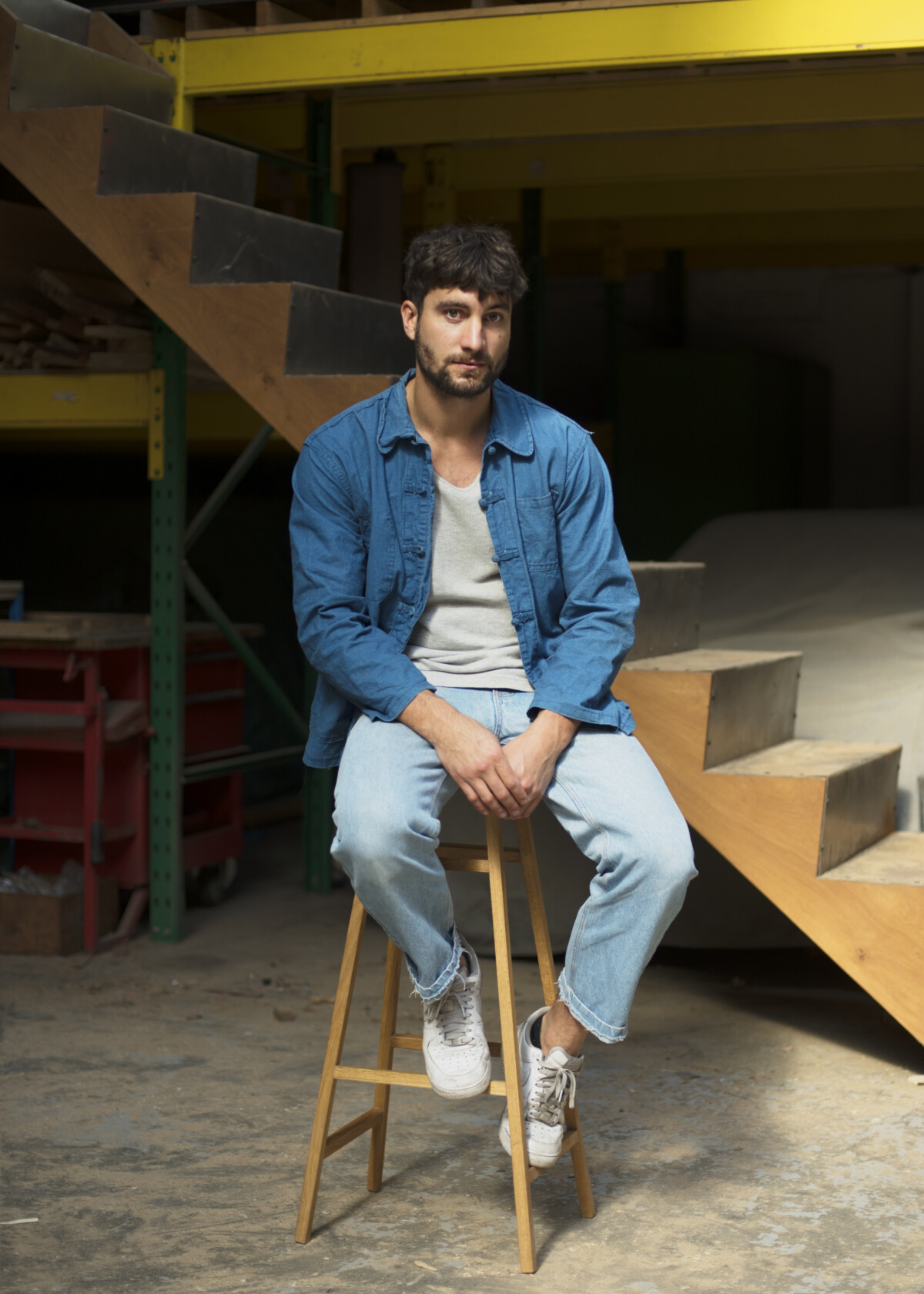
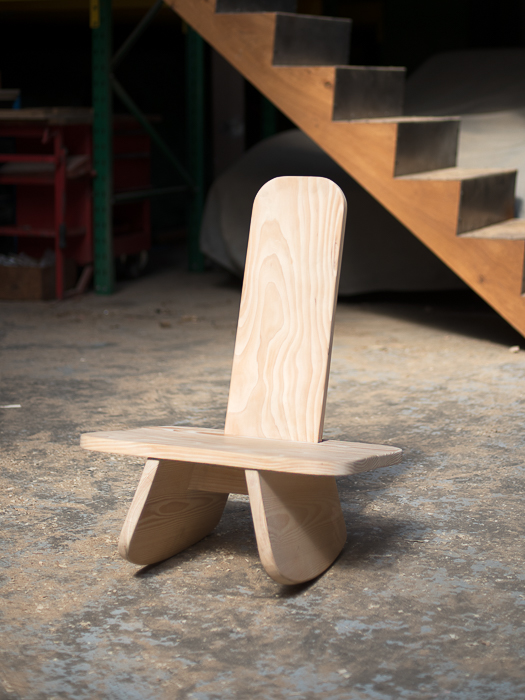
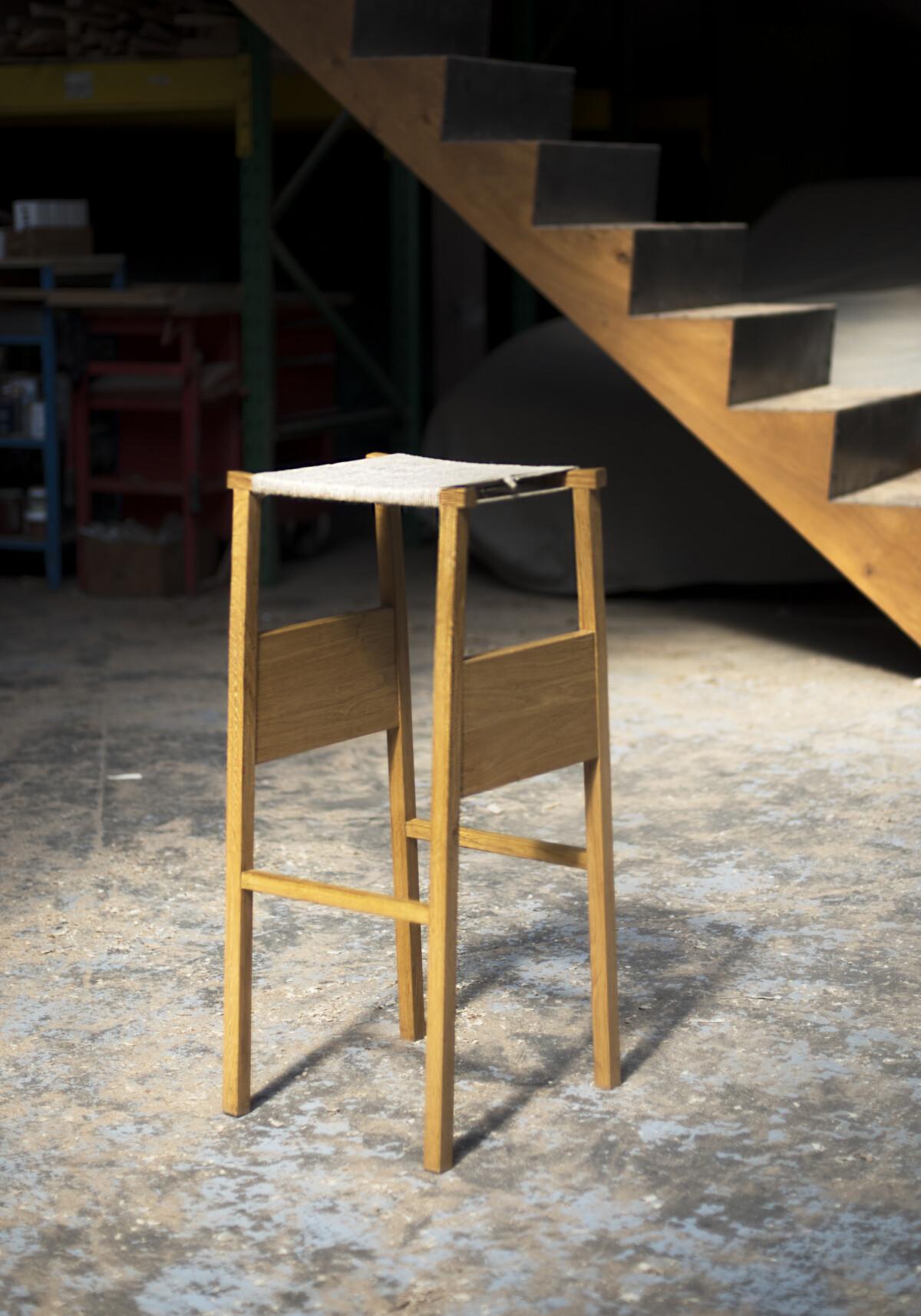
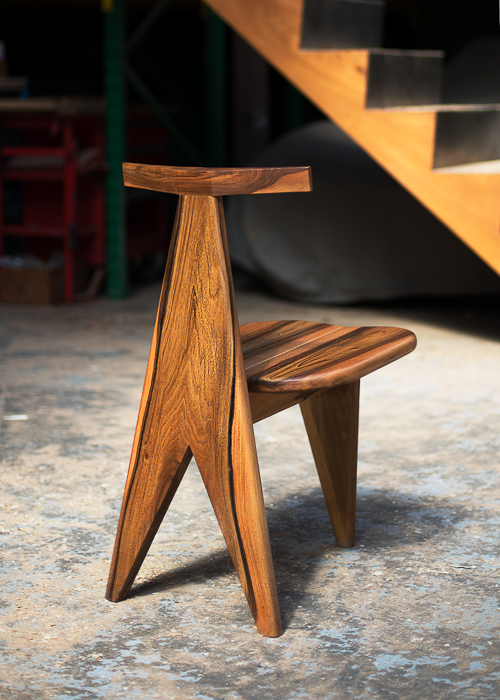
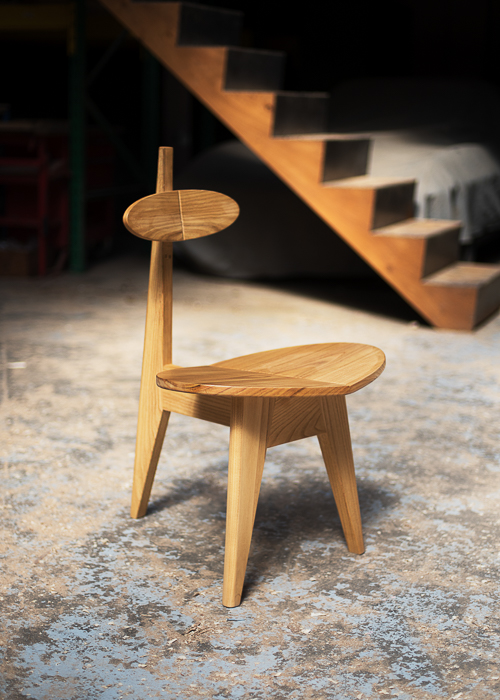
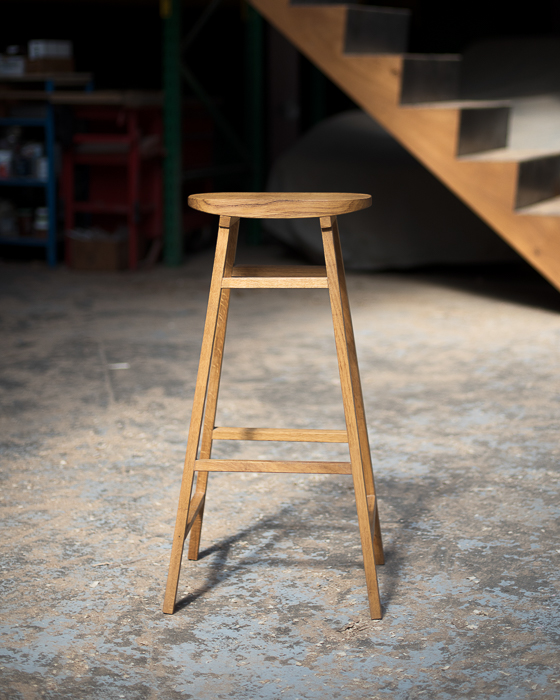
Eloi Schultz

Architect and cabinetmaker, Eloi shapes the material in his workshop in Ivry-sur-Seine. Inspired by shapes from elsewhere, he designs unique creations, halfway between everyday furniture and sculptural pieces. Inspiring encounter.
Hello Eloi, tell us about your background.
I went to an architecture school, started in Strasbourg and finished in Paris La Villette. I then enrolled in the cabinetmaking CAP of the Paris Furniture School, without really knowing where I was going. It is a fairly complete training over two years alternately, with courses at school and practice in the workshop.
What were your motivations in this specialization?
I believe that I have always been quite manual, in a broad sense: playing an instrument, cooking, repairing objects ... I learned a lot in architecture school, a whole theoretical culture of course, but also to build my own. thought. I had already worked with different materials in the past but it was definitely wood that attracted me, its appearance, its touch, its smell, it is a very sensual material. During my studies in architecture, apart from making the models which I made with a little too much care, I did not use my hands. On the other hand, I was already drawing a lot of objects, it is a scale of creation where I feel comfortable. When you are a craftsman and think of an object, you can already imagine how you will make it. So we design parts to also like to make them.
What place does drawing take in your creative process?
It's quite simple: I never leave my notebook. I use it to write everything down, I fill it with measurements, technical drawings, sketches and simple little shapes that touch me. When a shape comes back often, it's time to turn it into an object. The pieces I create try to translate this initial image as simply, honestly and harmoniously.
How do you select the essences you work with?
I work with local, European species. Among them I have a real preference for fruit trees such as apple, pear, cherry, or even walnut or chestnut. These are woods that are soft and homogeneous enough to be easily sculpted and worked with traditional tools (planer, chisel, gouge). Their antlers smell good, offer a wide variety of designs and colors, and in addition they provide us with fruit that can be enjoyed as long as the tree is standing. It makes you think.
Your work is very unique, on the border between craftsmanship and design. What are your inspirations?
I don't really have a conscious inspiration. I really like the simple and strong forms of Cycladic art, ancient African objects - ritual or customary - the vernacular ornamentation found in Romania, very geometric and which would have inspired Brancusi… Traditional craftsmanship, all of them cultures combined is a great source of inspiration. In my opinion, if objects are made by hand, they contain the intelligence and sensitivity of their creators. And in writing these words I spontaneously think of the work of Alexandre Noll, here is an inspiration!
How do you see craftsmanship evolving in general?
Currently I have the impression that craftsmanship survives by occupying the space left to it by industrial production, namely the creation of tailor-made works, which it is the only one able to achieve. But I also see at the same time that people care about giving more meaning to the things around them. This involves food, the abandonment of certain professions, the search for a more conscious way of consuming… All of this is backed up, I think, by the realization that a global change is necessary to preserve a viable planet. Maybe in the future, everyone would benefit from being a little less consumer and a little more artisan.
What are your plans for the future?
I would like to come back to architecture a bit, through larger-scale projects such as the development of restaurants or homes. This is what I am starting to develop through Assemblage, the company that I co-founded in early 2020 with a friend. This ties in with the idea I expressed above: drawing parts knowing how we are going to make them, that changes everything. At the same time, I also want to continue to develop a more personal practice, by designing more sculptural objects, perhaps less usual. I am looking for a workshop in Marseille, a small place that I want to equip with as few machines as possible to encourage me to work even more by hand. These are my plans.





- Photographer: Noel Manalili
- Location: Vitry-sur-Seine, France
- Year: 2021
- Website: https://www.eloischultz.fr
Share
